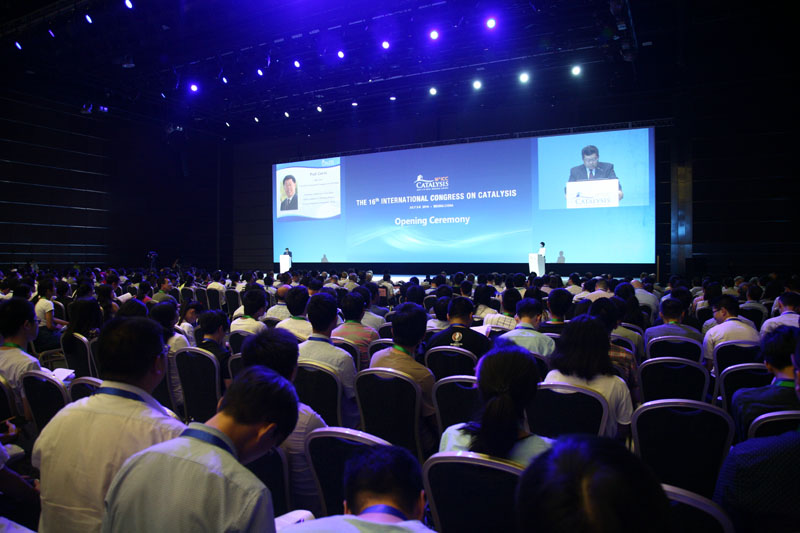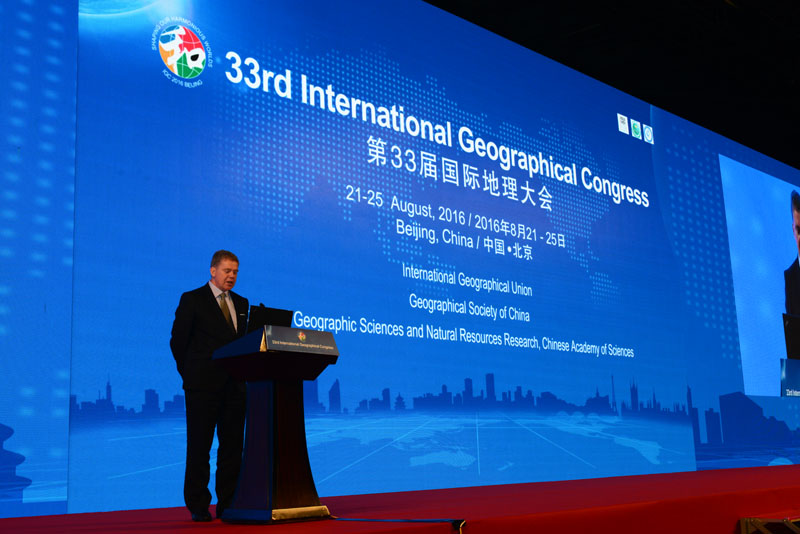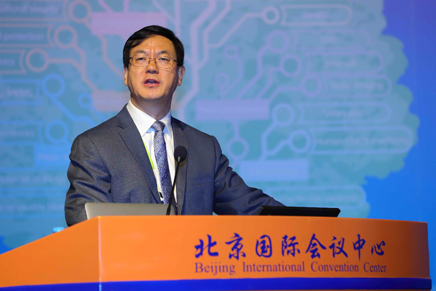

As Chinese Academy of Sciences (CAS) has increased its international cooperation and scientific research with good results, an increasing number of international academic organizations have chosen to hold their annual meeting or conference in China. In fact, CAS holds at least 400 international meetings a year on average and, this summer, helped organize some international meetings in chemistry, new materials, climate and geography, as follow:
1. The International Congress on Catalysis (ICC)

The 16th International Congress on Catalysis (ICC) took place from July 3 to 8, this year, in Beijing, at the China National Convention Center, with several thousand people from at least 50 countries taking part and Prof Li Can acting as chairman and Prof Shen Wenjie as secretary general. This meeting was noteworthy as the first time for the congress to be held in China since it opened back in 1956. Addressing the gathering for the opening ceremony, the morning of July 4, were Prof Li, Prof Avelino Corma, Prof Bao Xinhe, and Dr Xie Zaiku.
This year’s theme was “Catalysis for the Sustainable Development of the World”, which allowed it to focus on the crucial roles of catalysis science and technology in the following areas: clean and efficient production and utilization of traditional fossil resources; the development of renewable energies; and abating or eliminating environmental pollutants for a low-carbon emissions economy.
To deal with these, it had more than 300 talks, including five plenary lectures, two award lectures , 18 keynote lectures, and 81 invited lectures, as well as more than 200 oral and 1,800 poster presentations. Running alongside it were six simultaneous sessions covering catalysis for energy, catalytic materials, catalysis for energy, catalytic mechanisms, environmental and industrial catalysis, electro-catalysis, photo-catalysis, catalysis for chemical synthesis, biomass conversion, oxidation reactions, and carbon-based catalysts.
This congress, the largest and most prestigious of its kind in the world, has been held every four years since 1956 and usually attracts more than 2,000 people from around the world.
2. International Geographical Congress (IGC)
The 33rd International Geographical Congress got off to a good start, on August 22, at the China National Convention Center, in Beijing, hosted by the International Geographical Union (IGU), with help from the Geographical Society of China and CAS’s Institute of Geographic Sciences and Natural Resource Research.
This was the first time for China to play host to the 145-year-old congress, whose theme this year was “Shaping Our Harmonious Worlds”. Its purpose was to call on humans and the international community to achieve harmony among humans and nature and to respect nature and the differences in science and culture in various regions. Another goal was to encourage scientists and technicians to do more research on global changes and sustainable human development.

There were more than 200 other sessions taking place simultaneously with the IGU meetings, with the focus on five stimulating topics: geographical science and the earth’s future, climate change and a global consensus, urbanization and sustainable development, environment - health and social welfare, and geography in different cultural backgrounds. Some forums for discussing China’s national strategies including “Belt and Road Initiative”, “Central Asia Forum” and “Mountains Forum” were also organized. The conference pulled in about 5,000 specialists and scholars from countries all around the globe with more than 3,800 papers or abstracts delivered.
3. Asia Oceania Geosciences Society (AOGS)

The 13th annual meeting of the Asia-Oceania Geosciences Society (AOGS) took place from July 31 to August 5, this year at the China National Convention Center, in Beijing, with sponsorship from the China Association for Science and Technology (CAST) and Chinese National Committee for International Union of Geodesy and Geophysics (CNC-IUGG).
The Society is a non-governmental organization that was established in Singapore, in 2003, as an important gathering of Earth science academics from Asia and Oceania, with the purpose of promoting the geosciences through greater communications and cooperation in hopes of equaling the American Geophysical Union (AGU) and European Geosciences Union (EGU). It has eight areas: Atmospheric Sciences, Bio-geosciences, Hydrological Sciences, Interdisciplinary Geosciences, Ocean Sciences, Planetary Sciences, Solar and Terrestrial Sciences, and Solid Earth Sciences.
4. International Conference on Nanoenergy and Nanosystems(NENS)

The 2nd International Conference on Nanoenergy and Nanosystems (NENS2016) opened on July 13, of this year at Beijing’s China National Convention Center. It ran for three days and brought in nearly 600 specialists and scholars in nanoenergy and nanosystems from more than 20 countries and regions, who came to discuss vital, frontier issues.
This large meeting had six symposiums for nano-generators and applications, self-powered sensors and systems, piezotronics and piezo-phototronics, energy storages and self-charging power systems, hybridized energy cells and solar cells, and photo-catalysis and water splitting. It saw 300 academic reports delivered and 150 posters displaying the latest research results.
The purpose of this year’s session was to provide a site for high-level, multi-faceted exchanges by global scientists for the development of nanometer theories and technologies and their possible industrial application and to get more Chinese scientists involved in the field for a greater global influence. One special event was when the publisher of Nano Energy, Elsevier Ltd’s editor-in-chief, Wang Zhonglin, presented the “Nano-energy Prize” to Prof Yury Gogotsi, of Drexel University in the United States, for his outstanding contributions to the field.